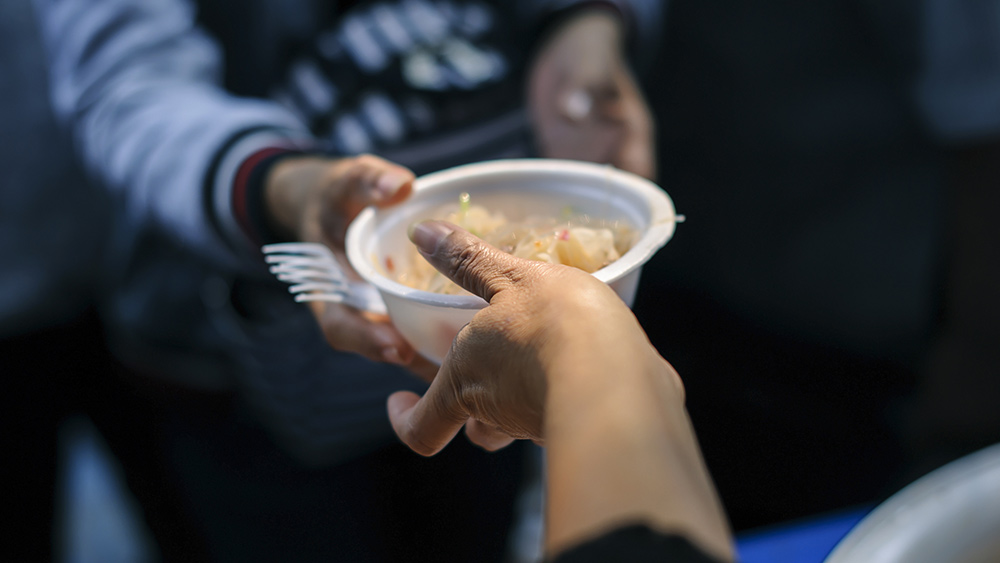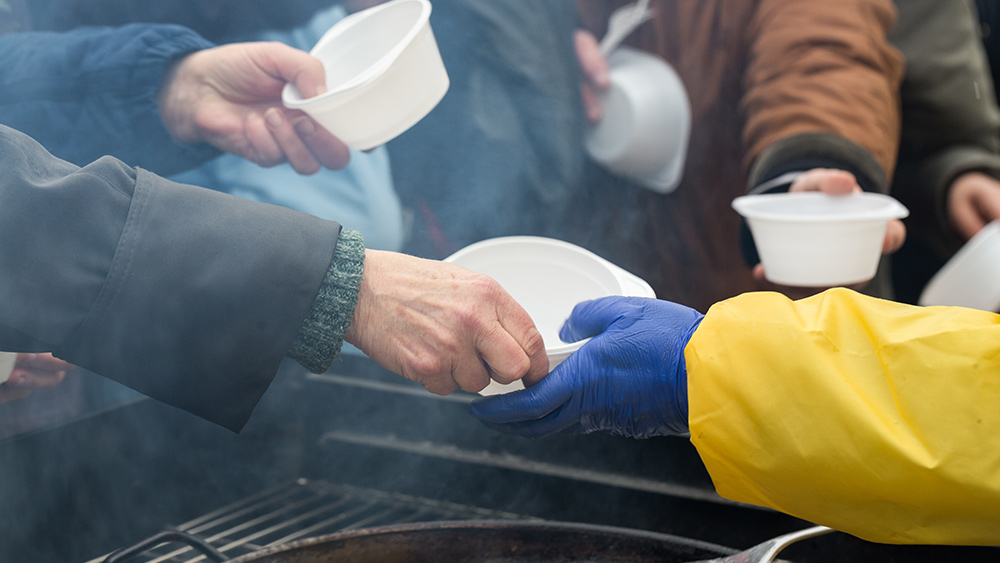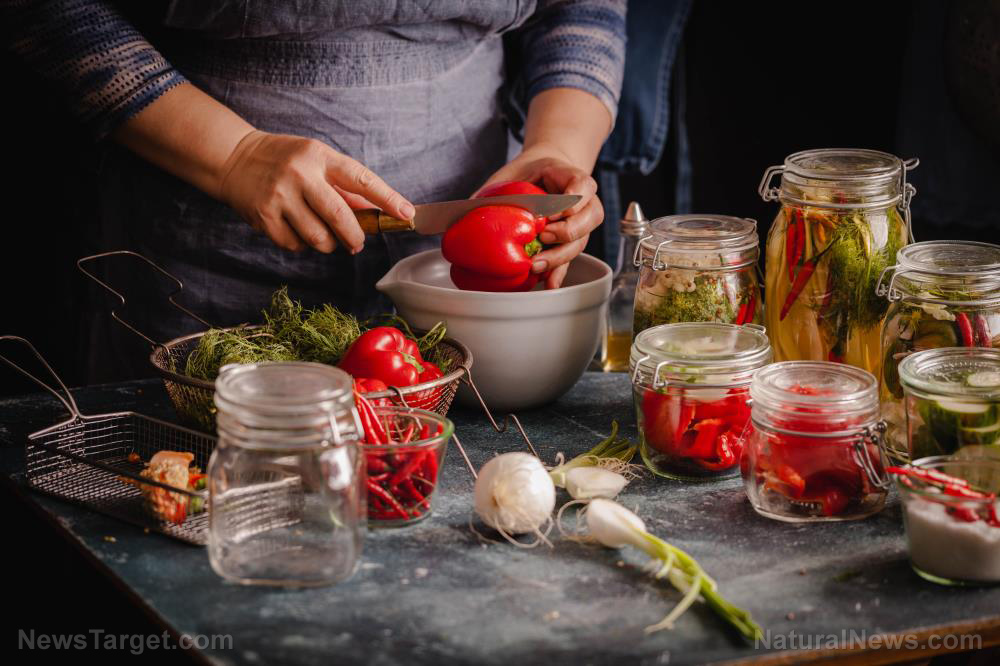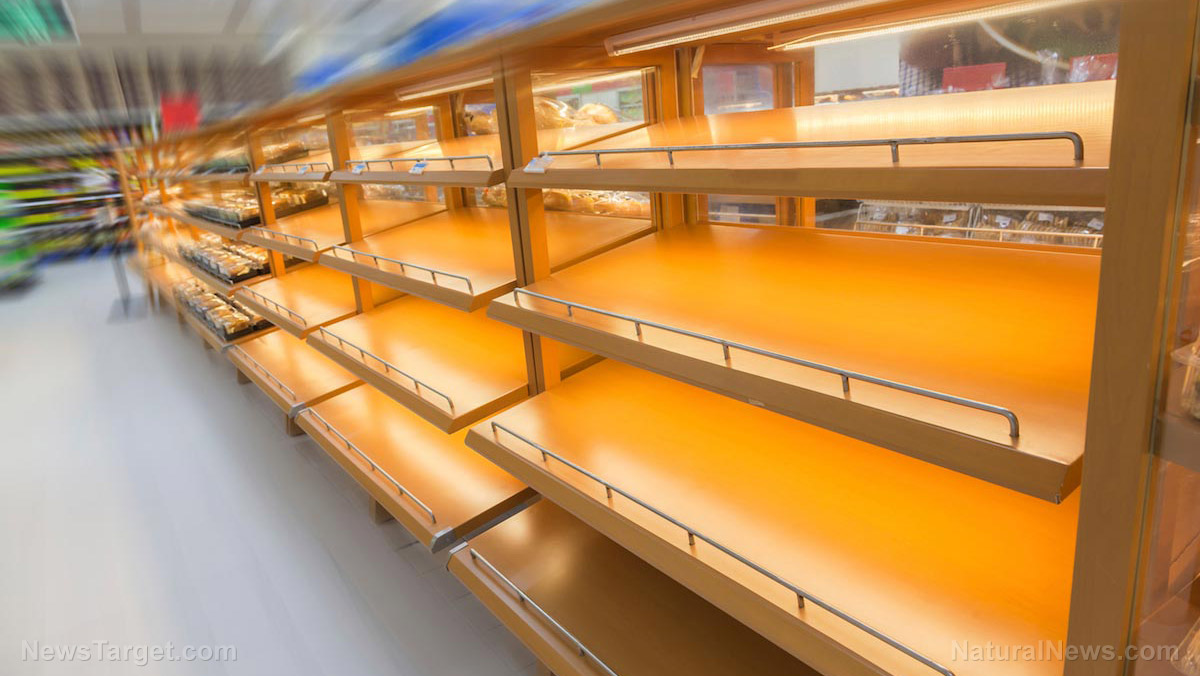Washington state records over 13 million food bank visits, braces for more this holiday season
12/18/2024 / By Arsenio Toledo

- The rapidly rising cost of living in Washington state is driving more residents into food insecurity, with one in four residents experiencing it in 2024.
- Food bank usage has surged from eight million visits in 2023 to over 13 million in 2024.
- Rising housing and grocery costs are seen as the primary drivers of food insecurity, with housing expenses like rent and mortgage payments disproportionately impacting household budgets.
- Food bank resources are declining, with the average food provided per person dropping from 21.65 pounds in 2022 to 17.23 pounds in 2024.
The rising cost of living in Washington state is driving an increasing number of families to seek assistance from food banks, according to recent data and statements from local organizations.
Both Food Lifeline, the state’s largest hunger relief organization, and the Washington State Department of Agriculture (WSDA) have reported significant increases in food insecurity and food bank usage over the past few years.
Food Lifeline, which serves as a central hub for food distribution across Washington, has noted a substantial rise in demand for its services. Robert Ojeda, a representative for the organization, stated that approximately 25 percent of Washingtonians, or one in four residents, are experiencing food insecurity.
This means that a significant portion of the population is struggling to access enough food to meet their basic needs. Ojeda emphasized that this figure has remained consistent, highlighting the ongoing nature of the issue.
The federal Government Accountability Office has corroborated this trend, reporting that food costs in western Washington have increased by 20 percent since 2021. This price surge has directly contributed to a rise in visits to local food banks and meal programs. (Related: Egg prices have increased by 35% since June – other grocery items also getting more expensive.)
In 2023, these visits totaled eight million, resulting in the distribution of 72 million pounds of food through 300 food banks and partner organizations. Ojeda projected that this demand will continue to grow, with visits expected to increase from eight million to 10 million in 2024.
Similarly, data from the WSDA reveals a concerning upward trajectory in food bank usage. According to the department, Washington residents visited food banks 13.3 million times during the 2024 fiscal year, up from 10.9 million visits in the previous year.
This represents a significant increase in the proportion of the state’s population relying on food banks, with officials noting that one in four Washingtonians visited a food bank in 2024, compared to one in five in 2023 and one in six in 2022.
Rising housing and grocery costs driving people into food insecurity
The primary drivers of this surge in food insecurity are rising housing and food costs, according to WSDA spokesperson Daniel Schafer. While both factors play a role, Schafer noted that housing expenses, especially rent and mortgage payments, have had a more pronounced impact on household budgets, leaving less room for grocery spending. This aligns with broader national trends, where housing costs have outpaced wage growth, exacerbating financial strain for many families.
In interviews with KIRO Newsradio, individuals waiting in line at food banks in Seattle echoed these challenges.
Lyle English, who used a metaphor to describe his financial struggles, emphasized the pervasive nature of his hardship. Susan, who only provided her first name and has been relying on food banks for five years, observed a decline in the quality and variety of food donations. She attributed this change to a shift toward government-supplied assistance as private donations have decreased.
The WSDA data also highlights a concerning trend in the amount of food distributed per person. The average number of pounds of food received by each individual has steadily declined from 21.65 in 2022 to 18.67 in 2023 and 17.23 in 2024. This decrease suggests that while demand is increasing, the resources available to meet that demand are becoming more limited.
To address this growing crisis, both Food Lifeline and the WSDA are calling for increased community support. Ojeda emphasized the need for volunteers and financial donations to sustain operations, while Schafer highlighted the importance of maintaining funding for food assistance programs as pandemic-era federal aid expires in 2025. The WSDA has increased its request for funding to ensure stability in these programs, recognizing the critical role they play in alleviating food insecurity.
Watch this report from MSNBC discussing the rising demand for food bank services.
This video is from the TrendingNews channel on Brighteon.com.
More related stories:
Grocery stores are LEAVING crime-ridden U.S. cities in droves, creating “food deserts.”
Local food banks struggling to keep up with demand as inflation leaves more Americans hungry.
10 Million more Americans struggled with HUNGER in 2022 compared to the previous year.
Sources include:
Submit a correction >>
Tagged Under:
charity, collapse, cost of living, cost of living crisis, economic riot, famine, finance riot, food banks, food collapse, food inflation, food insecurity, food scarcity, food supply, hunger, inflation, money supply, starvation, Washington, Washington State Department of Agriculture, welfare
This article may contain statements that reflect the opinion of the author
RECENT NEWS & ARTICLES
FoodRationing.news is a fact-based public education website published by FoodRationing News Features, LLC.
All content copyright © 2021 by FoodRationing News Features, LLC.
Contact Us with Tips or Corrections
All trademarks, registered trademarks and servicemarks mentioned on this site are the property of their respective owners.




















